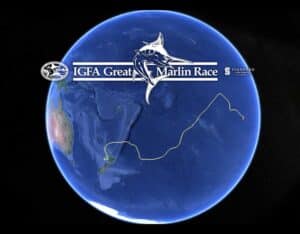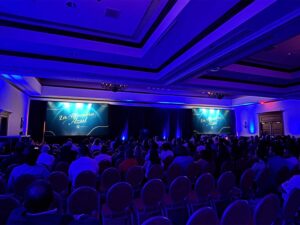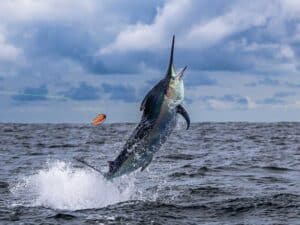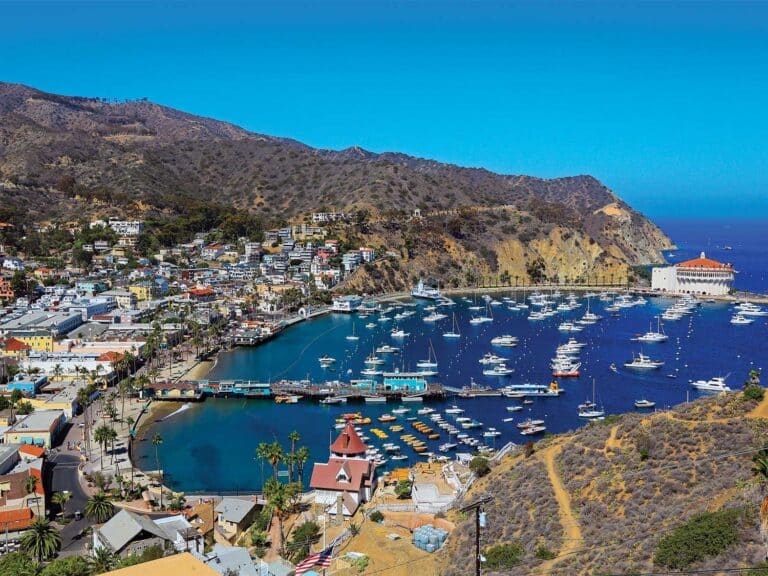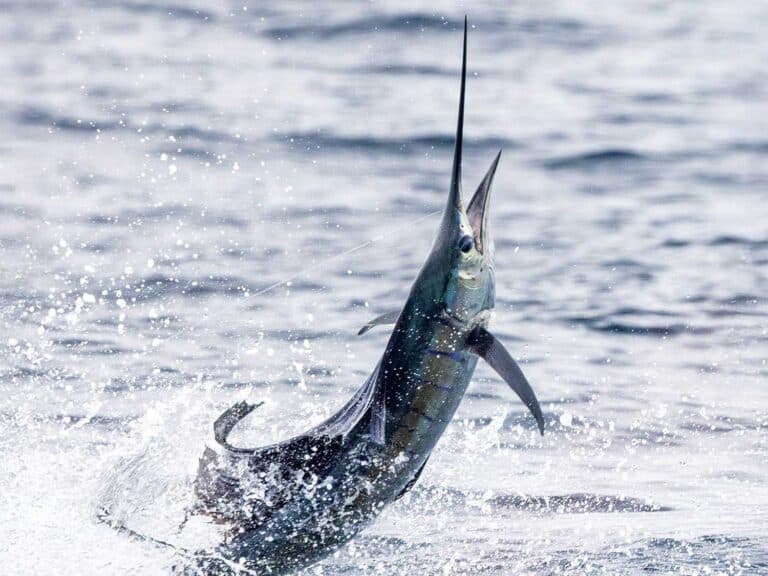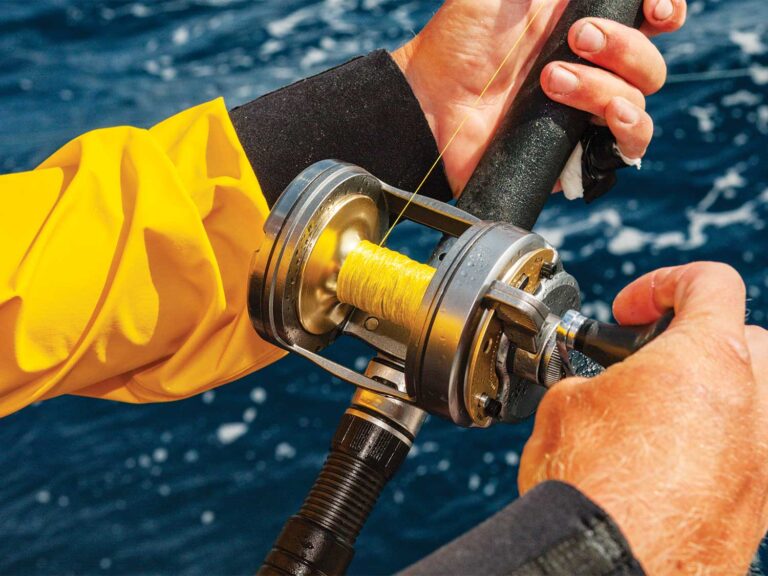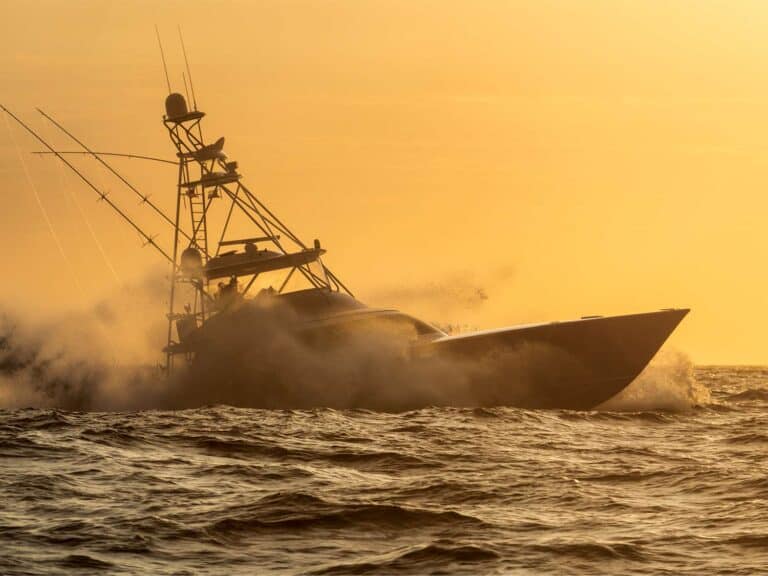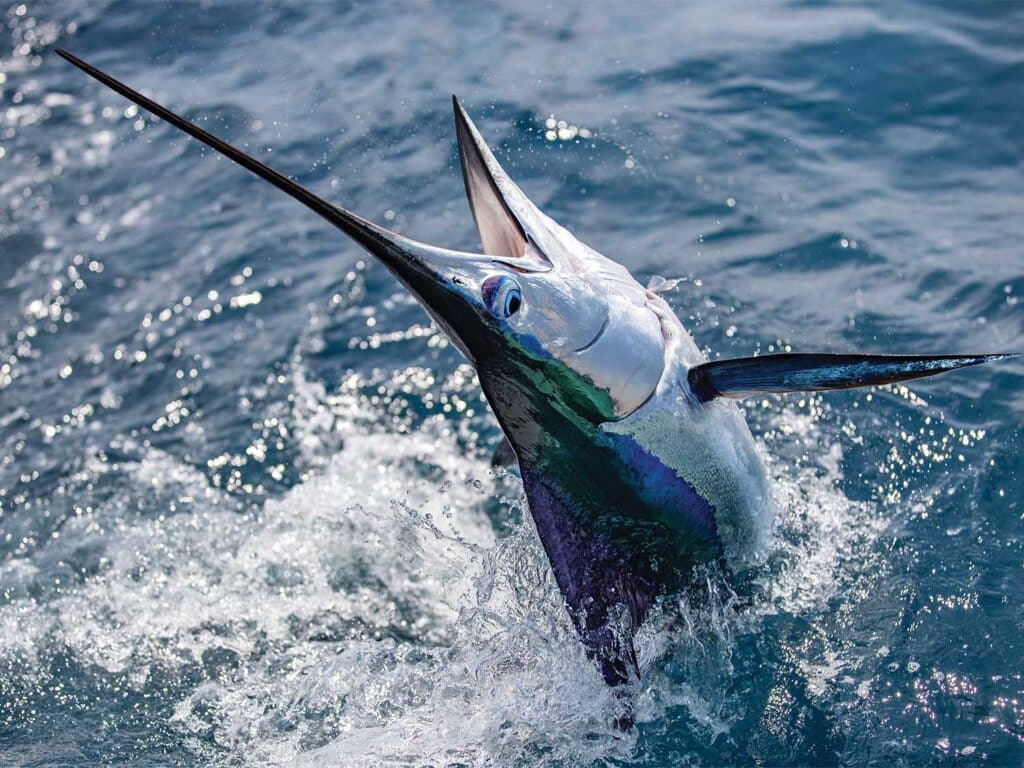
Subscribe to Marlin magazine and get a year of highly collectible, keepsake editions – plus access to the digital edition and archives. Sign up for the free Marlin email newsletter.
In the world of billfish conservation, innovation is born from collaboration. Few examples showcase this better than The Skillie Project, a community-based initiative transforming the way conservation work is approached.
At its heart, The Skillie Project was inspired by the momentum of The Marlin Fly Project, which united a dynamic team of anglers, scientists and locals in Magdalena Bay, Mexico, to satellite-tag striped marlin via fly-fishing. In total, 15 striped marlin were successfully satellite-tagged and released on the fly, providing critical data on migration, behavior and habitat use. However, it was the collaboration among those involved that made this research unforgettable. Local knowledge elevated the science, helping our team locate the fish. In turn, science elevated the local community, helping to develop trust and build a platform where The Billfish Foundation, Los Locos Mag Bay and the city of San Carlos can still collaborate today.
Built on the lessons of Marlin Fly’s unprecedented success and ambitious design, Skillie represents that same shift in conservation, acting as a testament to what’s possible when local communities are placed at the center of conservation work.
Born in 2024, The Skillie Project was started to understand and conserve the white-marlin fishery off Nantucket, Massachusetts. From the vision of Capt. John Galvin and videographer Matt Rissell, the goal was to collect valuable data and recognize the fishery, thus empowering local communities and once again building a conservation capacity where it matters most, among those who use and depend on these waters.
Every summer for roughly six weeks, a population of white marlin—fondly called “skillies” by locals—makes its way to Nantucket. Historically abundant, these larger-than-average white marlin drew anglers in record numbers through the late 20th century, but more recently, their returns have been spotty and unpredictable, raising concerns among the local fishing community.
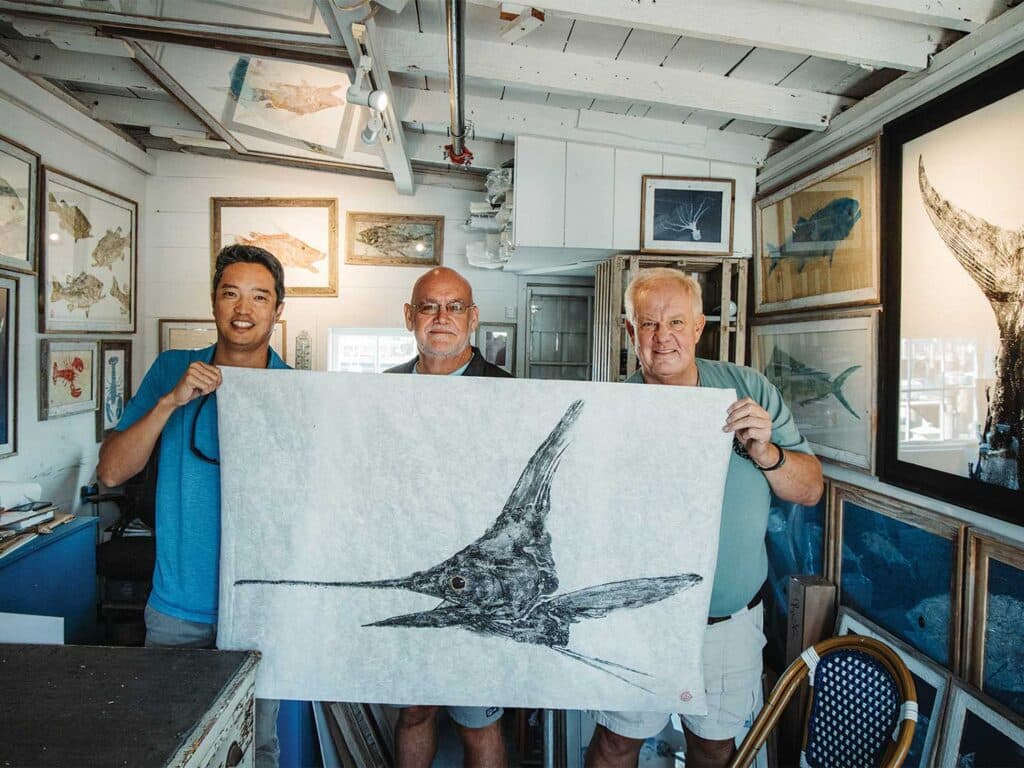
Through this, TBF recognized an opportunity. Partnering with local captains, anglers and researchers from the University of Maine’s Pelagic Science Lab, The Skillie Project launched with a clear mission: work with the local community and use the collected data to fill crucial knowledge gaps in white-marlin behavior, migration patterns and habitat use—all critical components for shaping smarter, more sustainable management practices in the future.
Tagging skillies in the unpredictable waters of Nantucket is no easy task. Success demands a perfect convergence of weather conditions, angling skill and a little luck. Working hand in hand with the local fishing club, shops and businesses proved essential to the project’s success and authenticity. Even the Skillie Project logo was crafted by a local artist, Pete Van Dingstee of Pete’s Fish Tales, further deepening the ties between science and community.
“This project isn’t happening to the community—it’s happening with and because of the community,” says Galvin, one of Skillie’s lead coordinators. “The difference in energy and commitment is palpable.”

Thanks to a groundswell of community enthusiasm and industry support, including from the MidAtlantic Tournament, Viking, Valhalla, Costa, Nomadix and Yeti, The Skillie Project was able to secure over a dozen satellite tags in just a couple of months. Galvin and Capt. Rob Goodwin then led teams aboard Viking boats, in collaboration with Capt. Martin Scanlan from the University of Maine, to deploy the needed tags. In its first season, the Skillie team managed to successfully tag five white marlin. In the coming months, we hope to receive and share the data from the pop-off satellite tags to better understand why larger white marlin are appearing off Cape Cod for such a brief period. This information could shed light on changing migration patterns or environmental shifts affecting their behavior.
Looking ahead, the Skillie team is already gearing up for efforts later this summer, with more local groups joining the endeavor . The goal is to tag even more skillies, as well as begin receiving and analyzing the first wave of data. As this vital information emerges, it will offer a clearer picture of the white marlin’s role in New England’s waters, helping to ensure these iconic fish remain part of the region’s heritage for generations to come.
As The Skillie Project continues to expand its reach and impact, it also offers a blueprint for the future of conservation. Between The Skillie Project and Marlin Fly, it’s evident that our collective efforts yield the best results of ensuring long-term sustainability and success of our oceans. Projects like this remind us that funding and innovative technology alone are not the answers, but rather the relationships and trust we build as a community. To learn more about The Skillie Project and how to get involved in TBF’s efforts, please visit its website at www.billfish.org.

